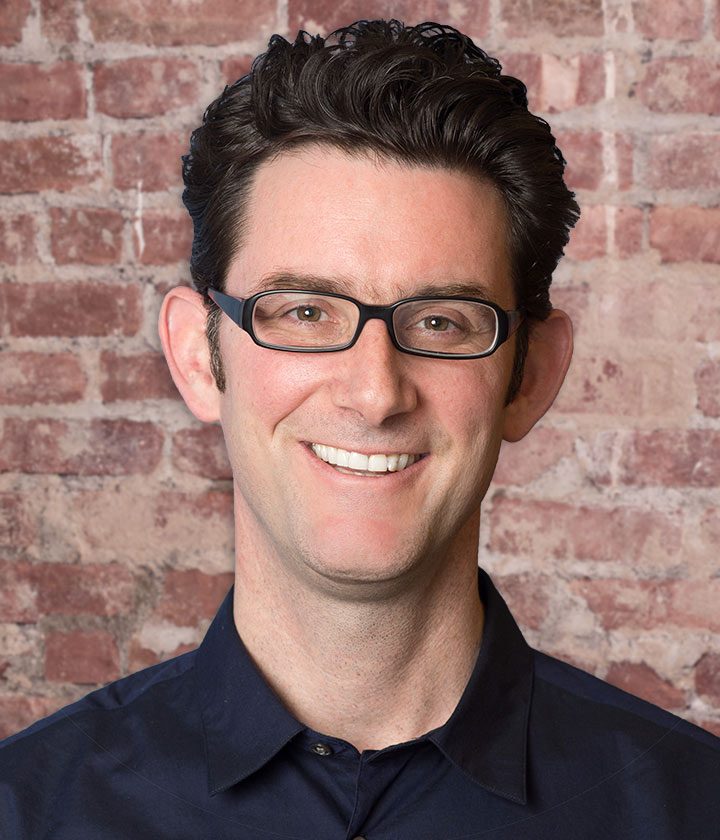The Five Spot: John Piccone

Bonus Five
Shows on your DVR?Rick & Morty and the National Treasure movies with Nicolas Cage. “That’s just got to be there.”
All-time favorite TV show? Bugs Bunny and Road Runner in the original Looney Tunes cartoons.
Books on your nightstand? Ron Chernow’s Titan, on the life of John D. Rockefeller Sr.
Favorite app? The Economist app.
Most memorable meal? With my mom and dad at the Jules Verne restaurant in the Eiffel Tower. I was 13 or 14. It was a three-star restaurant and with the city lights, it’s pretty special.
John Piccone, president and chief revenue officer of Simulmedia, a data-driven ad targeting pioneer, obviously loves tech startups. He’s been with more than a few, including HealthNation, Blackarrow, 24/7 Real Media and Publicitas Advertising Services.
“Taking an idea and putting it into the market and watching it develop is exciting,” Piccone said. “There’s nowhere to hide. It’s either ‘it launched’ or ‘it didn’t.’ That’s so nice and binary.”
Piccone has spent a chunk of his career in Europe, but prefers the U.S. entrepreneurial culture. “It doesn’t really care if you succeed or fail,” he said. “But it sure as hell gives you a lot of opportunity to do both.”
Originally from Larchmont, N.Y., Piccone takes photographs as a hobby. He also likes to bike and fish. He goes on walks with his three sons, two in high school and one in elementary school. He spoke with B&C senior content producer Jon Lafayette. An edited recap follows.
Why were you attracted to ad tech?
When I started in the game, the internet was just starting to become commercialized and it was understood that for it to be monetized through advertising, you would need a software platform and technology that could convince advertisers that it was worth their money. I like that macro approach of having that upside need and, within that, leveraging those needs against what’s practically possible through technology. The tech will say, ‘hey, we can do this,’ but the marketer is not ready or the seller or the agency and vice versa. That’s a really interesting paradigm to juggle.
Has it taken longer than expected for the TV business to adopt automation?
I’m not sure about that. When I started in the television game it was in 2000 in London, and I really set my expectations correctly. I think this is just something that gets forgotten as startups go into market is that human behavior is the hardest thing to change. So I felt that this journey of taking a 70-year-old medium and teaching it new tricks would happen at the pace that we’ve seen. We’re seeing it really start to pick up in the past year, year and a half, now that definitions are getting tighter. We’re seeing more case studies out of the market.
Broadcasting & Cable Newsletter
The smarter way to stay on top of broadcasting and cable industry. Sign up below
Looking ahead, what technology excites you?
I think it’s not so much a technology, but it’s a process and an illumination of the outcomes and the benefits of technology. And, in that context, I’m excited about the reaction that marketers have when they can have transparency of data to their needs. Marketers will be able to demand more transparency against their business outcomes and we’ll see the media metrics turn into the business metrics. I think that’s the exciting future for me.
Would you encourage your kids to go into tech?
They’re naturally attuned to the business just from having Dad come back, and [they] ask questions about what he does when he’s not home. I think the connected generation — they’re 17 and 15 — they’re just so much more dynamic and in tune with the impact of media and its impact on politics and social dynamics.
Why do you take pictures with an old-school Rolleiflex?
The most striking thing for me when the digital camera age came is, in those first microchips and processors, how flat the images were. When you’re actually printing on a piece of emulsified material the depth is infinite. That’s something that resonates with the viewer that you can’t replicate in digital ones and zeroes. When you’re shooting photos of loved ones, people are infinite as well. There’s a beautiful longevity that digital can’t capture.










